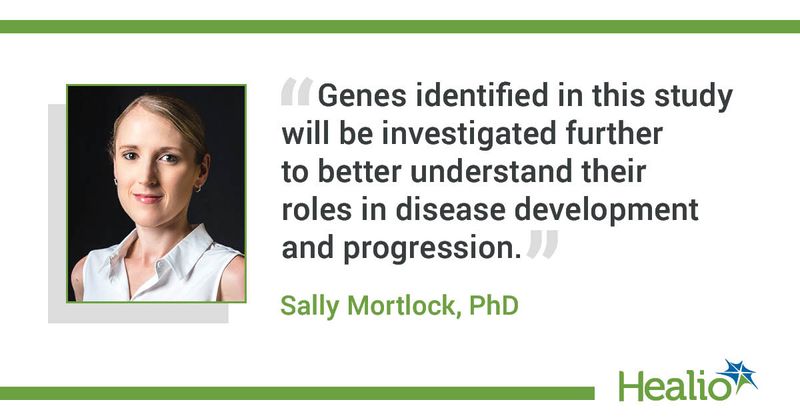Q&A: Researchers find genetic link between endometriosis, ovarian cancer
Data published in Cell Reports Medicine showed that endometriosis was genetically linked to ovarian cancer.
Specifically, the researchers found that endometriosis had a strong and causal relationship with two types of epithelial ovarian cancer (EOC): clear cell (CCOC) and endometrioid (ENOC). There was also a slightly weaker relationship with high-grade serous ovarian cancer.

Healio spoke with Sally Mortlock, PhD, a postdoctoral researcher at the University of Queensland Institute for Molecular Bioscience in Brisbane, Australia, to learn more about the findings and their implications for the future treatment of both diseases.
Healio: What prompted this study?
Mortlock: Previous studies have reported a higher incidence of EOC in women with a history of endometriosis. We wanted to better understand this potential link between the diseases. Our research aimed to look for genetic risk factors in common to both diseases and shared biological pathways leading to disease.
Healio: Why is it important to investigate this topic?
Mortlock: Despite endometriosis being one of the most common medical issues facing Australian women, with 1 in 9 women of reproductive age having the disease, our understanding of factors contributing to the disease is still limited and it can take an average of 7 to 12 years to diagnose. Ovarian cancer, whilst less common, is the deadliest gynecological cancer due in part to resistance to therapies and the absence of effective early detection strategies. More information about how these two diseases develop and their associated risk factors is needed to advance our understanding so we can develop better early detection and treatments.
Healio: Were any of the findings surprising?
Mortlock: We found that individuals carrying certain genetic markers that predispose them to having endometriosis also have a higher risk of certain EOC subtypes, namely CCOC and ENOC. We were able to identify 19 independent locations on the genome that contained genetic markers that increased risk for both diseases. We found different genetic markers were shared between endometriosis and different types of EOC, and by looking at the genes in these locations we get a better understanding of the link between the diseases and clues into biological pathways driving the different ovarian cancer types.
Healio: How will your findings impact clinical care?
Mortlock: Our findings give us a better understanding of risk factors and biological pathways contributing to these diseases that can be used to inform better diagnosis and treatments. We identified genes in this study that are linked to both diseases and could be drug targets to treat both endometriosis and EOC in the future, and genes that could disrupt the link between the two diseases. Knowledge of the relationship between endometriosis and ovarian cancer may also inform targeted screening for ovarian cancer in the future.
Healio: Considering these findings, what steps need to be taken to make progress in the treatment of endometriosis and EOC?
Mortlock: Genes identified in this study will be investigated further to better understand their roles in disease development and progression.
Healio: Is there anything else you would like to add?
Mortlock: Whilst there is significant overlap in genetic risk factors between endometriosis and ovarian cancer, the risk of women with endometriosis developing ovarian cancer is not substantially different from other women. Overall, studies have estimated that 1 in 76 women are at risk of developing ovarian cancer in their lifetime and having endometriosis increases this slightly to 1 in 55, so the overall risk is still very low.
Endometriosis affects as many women as diabetes and asthma yet it has not received the same level of attention or funding. Funding for the next generation of researchers is limited and highly competitive, competing against more well-known diseases. It is important to ensure that the next generation of researchers in endometriosis is not lost. Such a loss could limit future scientific discovery in a disease that affects so many women.
